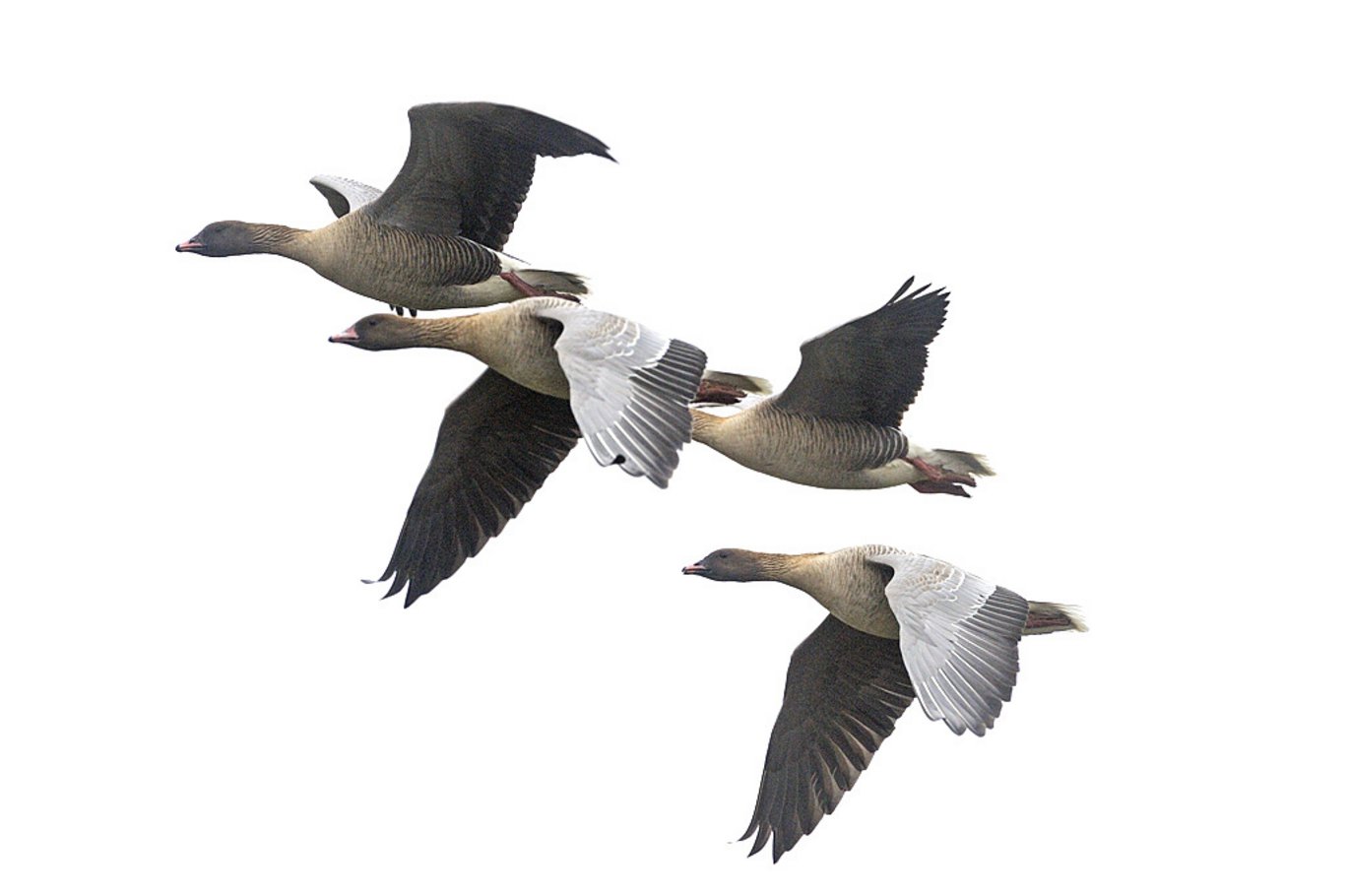Unique European waterbird management plan
Together with Norway, the Netherlands and Belgium, Denmark will initiate a unique management plan for the Svalbard population of the pink-footed goose.

Together with Norway, the Netherlands and Belgium, Denmark will initiate the first adaptive management plan for the Svalbard population of the pink-footed goose, a unique proposition in a European management context. The population is now so abundant in several Norwegian staging areas, but also in other countries, that it causes severe conflicts with agricultural interests. At the same time the population, which has quadrupled in 40 years and now stands at around 80,000 individuals, may threaten vulnerable tundra vegetation on its breeding grounds in Svalbard.
This innovative proposal between the four host countries for the collaborative management of the pink-footed goose has just been approved by an international agreement for protecting migratory waterbirds, The African-Eurasian Waterbird Agreement (AEWA), under the Convention for Migratory Species.
Professor Jesper Madsen, DCE – Danish Centre for Environment and Energy, Aarhus University, is an expert in migratory waterbirds and the prime initiator behind the agreement on the management plan built on the concept of adaptive management..
”The growth of the Svalbard population of pink-footed goose, along with other European goose species, can rightly be claimed a conservation success story, yet its increasing population size has progressively brought them into conflict with agricultural interests and is now a dilemma. In a number of countries large compensations are today paid to farmers suffering losses due to crops damaged by geese foraging in their fields. This is an unfortunate spiral as long as the populations continue to grow. In several countries interventions are discussed in order to reduce the conflict between geese and agriculture. Thus, in Norway a reduction of the population of pink-footed goose has been suggested,” says Jesper Madsen.
Objective: Population of 60,000 individuals
Close cooperation and agreement regarding objectives and actions are required of the countries to solve these transboundary conflicts. The adaptive management plan for pink-footed geese is the first of its kind in Europe and will – if successful – be a model for similar plans for other bird species under AEWA. In North America adaptive management has been employed for several years in connection with hunting on waterbirds – and Jesper Madsen and his colleagues cooperate closely with American experts to learn from their experiences.
The objective of the plan is to maintain the population in the long term at around 60,000 individuals in such a way that the population is not threatened but will not increase dramatically. This target is based on current scientific evaluations but it is recognized that this may change in light of new scientific understanding as part of the ongoing adaptive process, which aims to balance both biological and societal interests. The plan for pink-footed goose spans over several initiatives aimed to regulate the size of the population and secure its living and feeding conditions on its migratory route. This requires cooperation with local hunters, authorities, farmers and nature protection agencies, and initial contact has been made with several of the parties.
”Hunting of pink-footed goose is allowed in Denmark, but the plans will seek to optimize the hunting and minimize the risk of wounding. We already have a constructive dialogue with the Danish Hunters’ Association as the plan contains demands to the hunters and their skills. Moreover, the plan entails that adaptations must be made of national and regional practices within, among others, area use and supportive programmes counteracting the plan’s overall aim of securing the ecological needs of the goose population during its annual cycle and its natural migration patterns during the year,” says Jesper Madsen.
Adaptive management concept
The adaptive management concept means that the plan’s various initiatives and impacts on the goose population are continuously scientifically monitored and evaluated to enable adjustment according to needs.
”The adaptive concept holds significant research perspectives for the development of models predicting how the population will respond to the various measures, for instance increased hunting. The subsequent monitoring will show whether our predictions were fulfilled or not. This we will use to adjust our hypotheses and models. Thus, in a number of years we will have better tools for use in our consultancy services to the regulating authorities,” says Jesper Madsen.
Among the positive initiatives planned to be implemented to secure favourable conditions for the Svalbard population along its migratory route is the preparation of national and regional area management plans. These are intended to promote actions to lessen conflicts and further the possibilities for bird watchers to observe the geese and hunters to hunt them.
To the benefit of the geese there will be an increase in staging and overwintering habitats available where there is no conflict, for instance, by reducing disturbance on stubble fields or the restoration of grassland complexes where they can feed, which can reduce feeding on crops or pastures.
With the AEWA decision to implement the management plan, Professor Jesper Madsen will now together with his colleagues, authorities and stakeholders from the four range states, initiate the extensive work and research needed, for realizing the plan.
Contact: Professor Jesper Madsen, tel. +45 8715 8692, jm@dmu.dk
DCE – Danish Centre for Environment and Energy,
Department of Bioscience, Aarhus University
Draft of management plan
